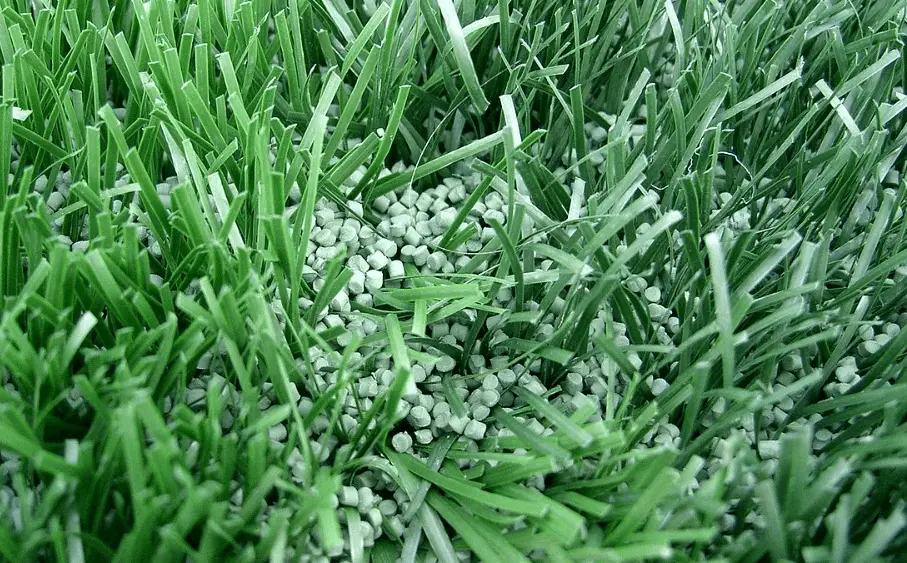Since William Webb Ellis picked up a soccer ball and ran to score a try in 1823, the world embraced rugby, setting up rules and governing bodies and building beautiful stadiums. Most stadiums feature natural grass pitches, but can rugby be played on an artificial pitch?
Although grass pitches are more popular, several professional rugby teams play on artificial pitches, for example, Saracens at Allianz park. The most significant drawback to artificial pitches is the frequency of injuries players sustain increases, particularly in overuse-related injuries.
Although some teams use artificial pitches, why do other teams avoid them? What are some of the types of injuries players sustain from these pitches? What are the advantages and disadvantages of artificial pitches in rugby? And will we see a movement towards artificial pitches? We’ll investigate these questions below.
Things To Know About Playing Rugby On An Artificial Pitch
Although some of the details around rugby’s origin are sketchy (some scholars believe the Romans played a form of rugby, others argue that there is no evidence that Webb Ellis picked up the ball), rugby’s popularity today is unquestionable.
According to World Rugby, 128 national member federations play rugby worldwide. Although no two rugby pitches (called fields) are alike, the majority of these rugby fields are grass on dirt (from school level to professional club rugby).
However, with technological improvements in the last few years, developers have produced artificial pitches that mirror the look and feel of natural “dirt and grass” and fields. Pitch designers add real sand/dirt and rubber “crumbs” (fragments) to a grass carpet, which they construct on rubberized mats on top of concrete.
To improve player welfare, World Rugby instituted the “Performance Specification for Artificial Grass Pitches for Rugby” (Regulation 22) in 2003.
Regulation 22 sets out a framework for what is required of an artificial pitch (for rugby union games). This regulation permits all aspects of a normal rugby game to occur on an artificial pitch mimicking a good natural pitch.
As with all things, there are benefits and drawbacks when playing rugby on an artificial pitch. Below we’ll investigate these to better understand the use of artificial pitches in rugby.

The Pros Of Playing Rugby On An Artificial Pitch
Some significant advantages of using artificial pitches for rugby stadiums include:
1. Artificial Pitches Are More Inclusive
Your field/pitch is not limited to rugby. Sports grounds are expensive to build and maintain, so the more sports played on a sports ground, the more “valuable” it becomes.
Using an artificial turf/pitch, other sports like field hockey, baseball, soccer, lacrosse, and lawn bowling are feasible.
2. Artificial Pitches Don’t Waste Water
You don’t need to water artificial pitches. The primary benefit of artificial turf/grass is that it does not need watering.
There is a global trend to save as much clean drinking water as possible. Trying to irrigate sports grounds is counterproductive, so replacing grass with artificial turf is a practical way to save water.
3. Artificial Pitches Can Be Indoors
Rugby (and other sports) is usually seasonal. When the weather becomes adverse, the games need to stop. While real grass needs sunlight (and water), artificial pitches don’t.
Therefore, developers can build indoor stadiums where weather and temperature no longer hamper play (i.e., air conditioning, heaters, and a roof to keep the rain).
While grass needs time to grow, an artificial pitch is “ready to go.” After an intense rugby game, the sports field usually looks worse for wear (all the togs tearing up the ground), and these fields take some time to recover.
If there is damage to the grass on an artificial pitch, you replace the damaged area, wait for the glue to set, and the next game starts.
4. The Pitch Is Uniform
One significant benefit of artificial pitches is that they are more or less uniform. Real dirt and grass fields tend to have slight depressions, raised areas, etc. You can’t control nature 100%.
Artificial pitches are constructed from the ground up, so more aspects are controlled, like evenness and gradient.
5. Artificial Pitches Have Better Drainage
There’s nothing like watching (or playing) a rugby game in the rain, with excessive skidding and sliding; however, these wet conditions damage the field and increase the risk of injury.
Artificial pitches don’t produce muddy conditions when wet and usually drain better.
The Cons Of Playing Rugby On An Artificial Pitch
Although there are advantages to playing on an artificial pitch, there are several poignant disadvantages, including:
1. There Is An Increase In Injuries On Artificial Pitches
The most significant drawback to playing rugby (and other contact sports) on an artificial pitch is the increased rate of player injuries.
According to the Irish Times, over 1 000 days of rugby played (between 2016 and 2017), there were 2 481 injuries on natural grass fields to 4 740 injuries on artificial pitches.
The injury rate on artificial pitches is 129.1 per 1 000 hours, while natural fields have a rate of 89.6 injuries per 1 000 hours. Artificial pitches have a slightly higher serious injury risk as well.
This ratio indicates almost double the number of injuries on artificial pitches.
2. Artificial Pitches Need To Pass Pregame Inspections
During a rugby league game in Canada, the match nearly didn’t happen. Before the rugby gets underway, the artificial pitch needs to pass an inspection. Several companies (like La Voz Sport) evaluate artificial pitches, and, pending the results, you may or may not play rugby there.
This testing is not limited to the states, as the English Rugby Union also requires an artificial pitch passing inspections, the first one in the year they complete the pitch, and every two years following.
3. Maintenance Of The Artificial Pitch
Although you don’t need to water fake grass, most 3-rd generation artificial pitches have rubber crumbs scattered across the surface, which help to replicate the feel and effect of natural grass. These rubber crumbs need constant monitoring and replacement.
Should maintenance not replenish these crumbs, the artificial grass loses its efficacy, becomes slippery, and increases the risk of injury.
Suggested Reading: 29 Items Needed For Rugby (Price Table)
Rugby Teams That Play On Artificial Pitches
Most of the rugby played on artificial pitches is in the US and Canada; however, there are some artificial pitches in the UK and New Zealand.
There are around 167 artificial pitches in the UK, including high school and club-level rugby.
Some US teams who frequently play on artificial pitches include:
Major League Rugby stadiums, including Cardinal Stadium, Lamport Stadium, Lupo Family Field, MCU Park, Sam Boyd Stadium, Starfire Stadium, Union Point Stadium, York Alumni Field, and Zions Bank Stadium.
Some UK based teams include:
- Cardiff Blues
- Glasgow Warriors
- Leinster
- Munster
- Newcastle Falcons
- Saracens
- Scarlets
- Worcester Warriors
Why Don’t More Teams Play Rugby On Artificial Pitches?
Player welfare is the most significant reason for not playing on artificial pitches. Although some studies indicate no difference in the type and frequency of injuries, many players (and clubs) don’t feel it’s worth the risk.
The studies indicate that trauma-related injuries are the same on both grass types, while there are significantly more overuse-related injuries on artificial pitches.
Examples Of Rugby Injuries On Artificial Pitches
- Sprains and Ruptured ligaments (especially in the ankles and knees)
- Muscle strains
- Abrasions (scrapes), superficial lacerations (a fancy way of saying cuts), and contusions (bruises)
- Concussions
Many rugby players and several studies indicate that recovery time is longer after playing on an artificial pitch and the overall strain impacts rugby players more than on normal grass.
Will There Be A Shift To Artificial Pitches In The Future?
Although most teams are not quick to jump on the artificial grass bandwagon, artificial pitches are not going away anytime soon.
While the future remains open and uncertain, as technology improves, the likelihood of artificial pitches growing in popularity increases, these pitches allow rugby to move into countries that cannot afford to build natural grass stadiums, particularly for weather reasons.
Although many clubs won’t change to 100% artificial pitches, they often consider a hybrid between artificial and natural grass (Desso pitches).
Conclusion
Although artificial pitches might become the “rugby field of the future,” many players and clubs stand against them. Several professional teams play on artificial pitches; however, the biggest risk is from overuse injuries. Artificial pitches must comply with World Rugby’s Regulation 22 rules and pass a certification process every two years.
Suggested reading: Rugby Boot Rules Made Simple
Image Credits
Saracens hosted Exeter Chiefs in the first official game at the renovated and expanded stadium. Ankomster, CC BY-SA 4.0, via Wikimedia Commons.
Artificial turf Drguttorm, CC BY-SA 3.0, via Wikimedia Commons
